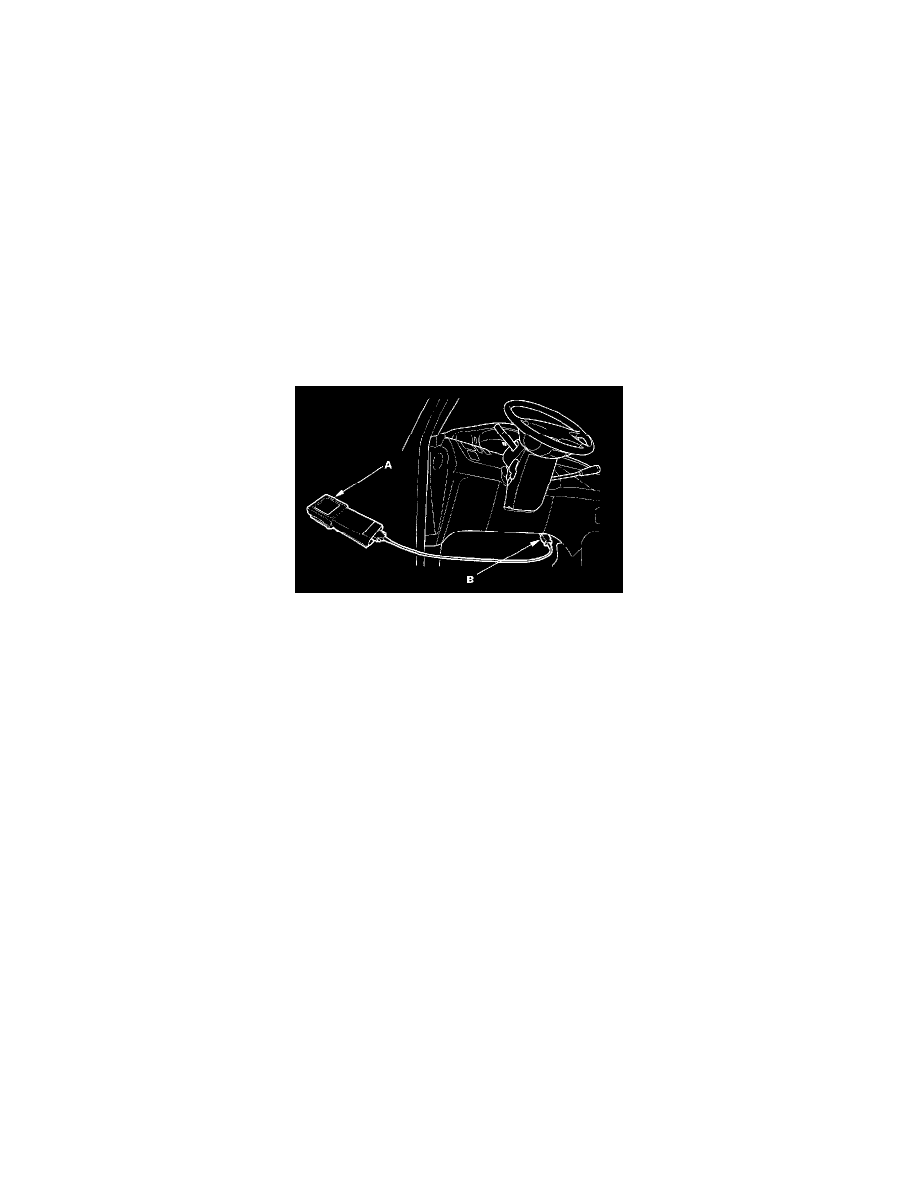Odyssey V6-3.5L (2003)

Seat Occupant Sensor: Service and Repair
Calibrating the Front Passenger's Weight Sensor Unit
Calibrating the Front Passenger's Weight Sensor Unit
When a front passenger's weight sensors and/or front passenger's weight sensor unit is replaced, calibrate the weight sensor unit by following the
procedure below.
While calibrating the front passenger's weight sensor unit, observe these precautions:
-
Make sure all components of the front passenger's seat are correctly installed.
-
Make sure all optional parts such as a seat covers are removed.
-
Position the front passenger's seat to the rear most position, adjust the seat height to the lowest position, and adjust the recliner to the most forward
position.
-
Make sure nothing is on or under the front passenger's seat, and there is nothing in the seat-back pocket.
-
Keep the windows closed.
-
Perform all calibration procedures except test driving in the service bay.
-
Make sure the vehicle is on level ground.
-
Keep the A/C and the heater off.
-
Do not touch the front passenger's seat until you are finished with the calibration.
-
Do not expose the front passenger's seat to sudden temperature changes.
1. Connect the Honda PGM Tester (A) or the Honda Diagnostic System (HDS) to the data link connector (DLC) (B).
2. Drive the vehicle, and accelerate to 20 mph (36 km/hr), then stop on level ground.
3. From the tester's adjustment menu, select "SWS INIT."
4. Prepare a weight between 55 to 77 lbs (25 to 35 kg), then measure and note its actual weight (M) with a weight scale.
NOTE: The accuracy of the weight scale must be within ±2.2 lbs (1 kg).
5. Place the prepared weight on the front passenger's seat.
6. Drive the vehicle, and accelerate to 20 mph (36 km/hr), then stop on level ground.
7. From the tester's inspection menu, select "SEAT OUTPUT CHK." The weight (T) of the front passenger's seat is recorded by the tester.
8. Calculate the variance between the weight measured by the weight scale (M) and by the tester (T), using the formula provided below.
Variance = (T) - (M) < ±8.6 lbs (3.9 kg)
M: Weight measured by the weight scale
T: Weight measured by the tester with the weight on the seat
-
If the variance is ±8.6 lbs (±3.9 kg) or less, calibration is complete. Go to step 17.
-
If the variance is more than ±8.6 lbs (±3.9 kg), remove the seat weight sensors, reinstall them, and go to step 9.
9. Remove the weight from the front passenger's seat.
10. Drive the vehicle, accelerate to 20 mph (36 km/hr), then stop on level ground.
11. From the tester's inspection menu, select "SEAT OUTPUT CHK." The weight (T0) of the front passenger's seat is recorded by the tester.
-
If the reading on the tester (T0) is ±6.6 lbs (±3.0 kg) or less, go to step 12.
-
If the reading on the tester (T0) is more than ±6.6 lbs (±3.0 kg), repeat steps 2-8.
12. Measure and note the prepared weight (M1) again with a weight scale.
13. Place the weight on the front passenger's seat.
14. Drive the vehicle, accelerate to 20 mph (36 km/hr), then stop on level ground.
15. From the tester's inspection menu, select "SEAT OUTPUT CHK." The weight (T1) of the front passenger's seat is recorded by the tester.
16. Calculate the variance between the weight measured by the weight scale and the tester, by using the formula provided below.
Variance = (T1) - (M1) < ±8.6 lbs (3.9 kg)
